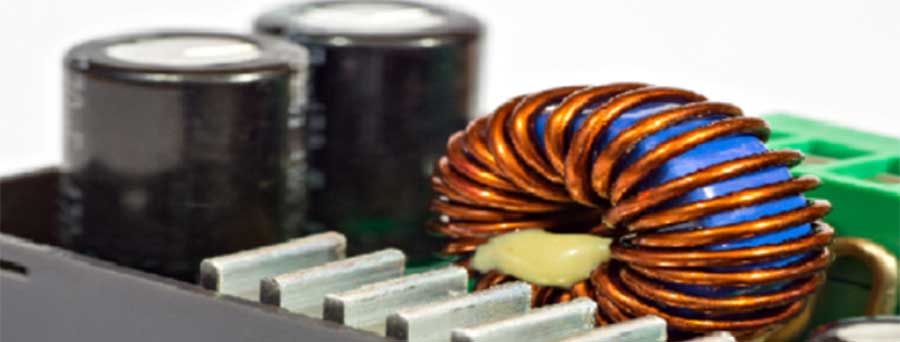Understanding the inner workings of essential electronics such as transformers is crucial as the world advances in technological innovations. To fully appreciate the operation of toroidal transformers, it is imperative to grasp the fundamental operating principles of electrical transformers, including the role of coil winding. An electrical transformer, such as those that utilize toroid coil winding, is a passive device that transports electrical energy from one circuit to another. This exchange occurs by generating an electromotive force (EMF) by a magnetic field, all while ensuring the electrical isolation of the two circuits.
Fundamental Principles of Transformer Operation and Coil Winding
 Toroidal transformers, often incorporating specific coil winding techniques, operate on the foundations of Faraday’s law of induction. This principle emphasizes the direct relationship between a changing magnetic flux and the induced EMF. The magnetic flux is generated when magnetic field lines traverse through a conductor. Placing this conductor near a magnetic field with fluctuating amplitude initiates an electric current in the conductor, a key factor in toroid coil winding.
Toroidal transformers, often incorporating specific coil winding techniques, operate on the foundations of Faraday’s law of induction. This principle emphasizes the direct relationship between a changing magnetic flux and the induced EMF. The magnetic flux is generated when magnetic field lines traverse through a conductor. Placing this conductor near a magnetic field with fluctuating amplitude initiates an electric current in the conductor, a key factor in toroid coil winding.
Influence of Alternating Current in Electromagnetic Induction and Coil Winding
The alternating current (AC) dramatically influences the coil winding process, crucial to electromagnetic induction, as it generates and collapses the magnetic field at a specified frequency. This frequency directly influences the induced electric current in a second conductor, which shares the same frequency as the primary electromagnet circuit.
Inducing Current Through a Magnetic Field in Toroid Coil Winding
In toroid coil winding, fluctuating amplitude isn’t the only method to induce a current. Another approach involves making the conductor “cut” through the magnetic field lines. This action prompts the generation of an electric current, a phenomenon typically observed in electrical generators and is a crucial part of toroid coil winding.
Anatomy of a Single-Phase Transformer Utilizing Toroid Coil Winding
A primary single-phase transformer serves as a simplified model for understanding toroidal transformers and the role of toroid coil winding. This type of transformer contains two electrical coils – the primary and secondary windings. The power supply connects to the primary winding, while the secondary winding is where current is generated.
Transformers as Constant Power Devices: The Role of Coil Winding
Transformers, including toroidal transformers, are often perceived as constant power devices, provided no losses exist. This is greatly due to the process of coil winding. The power generated in the secondary winding, created through toroid coil winding, matches the power supply in the primary winding. Consequently, the current must be reduced to escalate the voltage, and vice versa.
Factors Affecting Transformer Efficiency and the Impact of Coil Winding
The efficiency of transformers, including those utilizing toroid coil winding, usually ranges from 88% to 99%. When they occur, power losses can be attributed to various factors. Core losses arise from hysteresis or eddy currents, while copper loss is due to the electrical resistance of the copper windings. The stray loss stems from the leakage of the magnetic field influencing other conductive parts of the transformer. Dielectric loss is triggered by the degradation of the shielding materials and the transformer oil.
The complex operation of toroidal transformers and the intricacies of toroid coil winding are grounded on fundamental physics principles. With an appreciation for these principles, we can better utilize these essential devices in our day-to-day lives. Furthermore, with custom coil winding, we can tailor these transformers to suit specific applications, pushing the boundaries of technological innovations.
Related Reading
- Reducing Parasitic Capacitance and Inductance in Toroid Coil Winding for High-Fidelity Audio ApplicationsAs an electrical engineer in the audio industry, you’re likely aware of the importance of reducing parasitic capacitance and inductance in toroid coil winding.
- Enhancing Toroid Coil Winding: Practical Steps for Reliability and Longevity
- Top Reasons to Use a Toroid over a Solenoid Core

